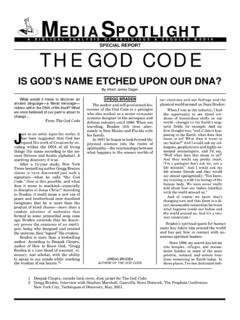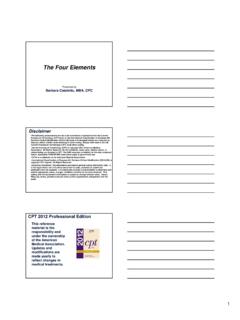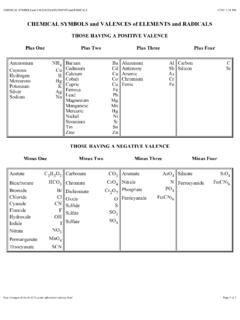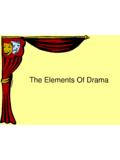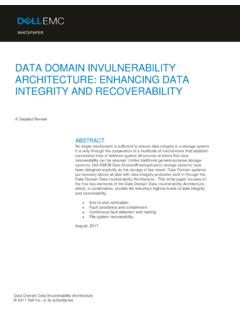Transcription of A BIBLICAL ANALYSIS OF RELIGIOUS & SECULAR …
1 You ve been searching for a long time. Youdecide to tryone more church that advertises itselfas a Bible-believing fellowship. The worship portion of its serviceis uplifting; the music glorifies the Lord(and sometimes theChurch). Overall, its teachings are BIBLICAL , and there are nofar-out doctrines to be you ve settled in and become acquainted withthe leadership, and theywith you, you tell them that youwould like to serve this church in some capacity. You arehanded a surveyto complete. The survey asks questionsrelative to your likes and dislikes, as well as how you feelyou would react in certain circumstances. The purpose ofthe surveyis to determine your spiritual gifts.
2 You come to findout that it isbased upon a theory known as theFourTemperaments. You are told that youwill be placed in anarea of service within the church according to the strengthsof your particular temperament as revealed in the S GOING ON?Many churches todayare buyinginto the FourTemperament theory in attempts to determine where theircongregants spiritual gifts lie. Because Christianbookstorescarry numerous books on the subject, authoredby well-known and respected personalities within theChristian community, it s assumedthat thereis noproblem with incorporating such a theory into a church sassignment of ministry to individuals. Since Scripture does not address anything liketheFour Temperaments, it isassumed that there is nothing wrong in utilizing them as aguide for ministry.
3 In fact, however, the opposite is it comes to ministry, or anything that touchesthe spirit of man especially in his relationshipand se rvice to God Scripture must be the only guide. All theories,whether purported to be scientific or not, must be testedby God s Word. This is true of the four Temperamentstheory no less than any other psychological CAME THE four TEMPERAMENTS?In the Encyclopedia ofHuman Behavior, Goldensondefines temperament as A general term foremotionalmake-up, including characteristic energy level, moods and mood changes, intensityand tempo of reactions topeopleand situations. 1 TheFour Temperaments theory isone of severalbehavior-oriented theories that modern psychology hasadopted from ancient schools of philosophy.
4 The theorystates that there are four basic personality types known as sanguine, phlegmatic, choleric, and melancholic. What this all means will become clear as we consider theorigins of the four temperament brief look at the history of the four temperamenttheory will reveal that its origins lie in ancient myths andoccult practices. From ancient times through the Middleages, physicians and philosophers used theirunderstanding of the four humors (body fluids), the fourtemperaments, and signs of the zodiac to treat diseasesand understand individual differences in cosmology s four elements arebasic to the fourtemperament personality theory.
5 Greek philosopherEmpedocles (495-425 ) taught that there were fourprimary elements in the known universe: fire, air, earthand water. Each had specific qualities of warm, cold, dry,and moist, with fire being warm and dry; air being warmand moist; earth being cold and dry; water being cold of the inherent mixture of cosmology with mythology, each element also had its corresponding godor goddess. Zeus is the fire, Hera the air, A doneus theearth,and Nestis the water. The four elements and theirqualities were also part of early Greek (460-377 ) later expanded onEmpedocles theory of four elements and taught that therewere four corresponding body fluids or humors: blood,yellow bile, black bile, and phlegm.
6 He theorized thathealth depended upon the proper balance of those humors in the body and that illnesses were caused by animbalance of the body fluids. He also taught that therewas a relationship between the body fluids and the yearlyseasons, with seasonal variations for each fluid. Forinstance, phlegm was noted to increase in the winter andto be weakest in the believed that peoplehad differentproportions of the humors with one humor more or lessdominant. Thus his scheme of relationships among theelements and their qualities, the body fluids (humors) andthe seasons would look like this:A BIBLICAL ANALYSIS OF RELIGIOUS & SECULAR MEDIASPECIAL REPORTFOUR T EMPERAMENTSASTROLOGY & PERSONALITY TESTINGC ondensed from the book by Martin &DeidreBobganElementQualitiesHumor TypeSeasonAirWarm/MoistBloodSanguineSpri ngFireWarm/DryYellow BileCholericSummerEarthCold/DryBlack BileMelancholyAutumnWaterCold/MoistPhleg mPhlegmaticWinterHippocrates is generally credited with the humoraltemperament theory of personality, since heconnected thetypes withboth mentaland physical states.
7 For instance,blood, being warm andmoist, madethe cheeks rosy andpromoted a cheerful (sanguine) temperament. Phlegm, onthe other hand, was considered cold and moist andbrought about watery-looking, colorless skin and a blandor sluggish continued to use and to build uponHippocrates original premises. Plato (427-347 ), whohad studied under Socrates,contended that madnessresulted from morbid humors contacting a person s mortal that the qualities of the elements andtheconstitution of the humors related directly to behavior,Plato stated:The truth is that the intemperance of love is adisease of the soul due chiefly to the moisture andfluidity which is produced in one of the elements by theloose consistency of the compounded his erroneous theory by arguingthat bad behavior is at least partly caused bybodilycondition:For no man is voluntarily bad.
8 But the bad becomebad by reason of an ill disposition of the body and badeducation, things which are hateful to every man andhappens to him against his where the acid and briny phlegm and otherbitter and bilious humours wander about in the body,and find no exit or escape, but are pent up within andmingle their own vapours with the motions of the soul,and being carried tothe three placesof the create infinite varieties of ill-temperand melancholy, of rashness and cowardice, and alsoforgetfulness and s student, Aristotle (384-322 ), believed thatthe shape of the body reflected the activities of the soul aswell. He was interested in how the humors were involvedin formingthe body and the mind.
9 He associated warm,thick blood with strength, and cold, thin blood Galen of Pergamum( ) wasaphysician who advanced Hippocrates theories and tookthem to the Roman world. He built on Hippocrates original theories and wrote morefully on the relationshipbetween humors and temperaments. In his text book onpsychology, Understanding Human Behavior, James says of Galen:..His studies of the functioning of human and animalbodies wereso excellent that he is often considered thefather of modern of Galen s main interests was the variousglands in th e human body, and the chemicals theseglands secreted. Like most other physicians 2,000 yearsago, Galen called these glandular secretions the humorsof the body.
10 Galen stated that four of these humorswere mainly responsible for creating four differenttypes of temperaments. Galenbelievedthat these fourtemperaments werethebasic structures of Galen was concerned, bloodwas a humor. If a woman was most influenced by herblood, Galen calledher a sanguine, or bloody, person. People with sanguine temperaments weresupposed to be cheerful, hearty, outgoing, sturdy,fearless, optimistic, and interested in physical second humor was phlegm, the thick, whitematerial that you sometimes cough up when you have a cold. From Galen s point of view, phlegm was cold,moist, and your bodilyprocesses weredominated by too much production of phlegm, you had a phlegmat ictemperament.
